Do you have all the information your facility needs to keep the public safe and prevent the spread of COVID-19?
As a public service for Canadian residents, the following articles are provided to help arena and public venue staff be familiar with the latest information on keeping their facilities safe.
Guidelines For Employers
Establish policies to reduce the spread of COVID-19 in the workplace and make sure these are communicated and understood by employees:
- Use the risk-informed decision-making guidelines for workplaces/businesses during the COVID-19 pandemic.
- Increase communication to staff and your customers about COVID-19 and measures you are taking for prevention.
- Post signs asking ill clients or customers to stay away from the workplace.
- Post signs encouraging good respiratory hygiene, hand hygiene, and other healthy practices
- Where feasible, adjust policies and procedures to reduce social contact, such as teleworking arrangements, flexible hours, staggering start times, use of email and teleconferencing.
- Cancel or postpone all non-essential meetings or travel.
- Evaluate the workplace for areas where people have frequent contact with each other and share spaces and objects, and increase the frequency of cleaning in these areas.
- Consider ways that employees can practice phsical distancing, such as increasing distance between desks, people in line-ups and workstations.
- Consider minimizing interactions between customers and your employees, such as limiting the number of customers permitted in your establishment or serving customers over the phone. Ideally, a 2-metre separation should be maintained, unless there is a physical barrier (e.g. cubicle, Plexiglas window).
Provide the necessary facilities and cleaning products to maintain a clean and safe workplace:
- Provide access to handwashing facilities and place hand sanitizing dispensers in prominent locations throughout the workplace.
- Ensure that high traffic work areas or frequently touched surfaces are cleaned and disinfected more often.
- Ensure that cleaning supplies are available for employees to clean and disinfect their workspaces.
- Provide employees with any personal protective equipment recommended by occupational health and safety guidelines, and training to ensure it is used correctly.
Make sure employees know what to do when they have symptoms:
- Consider relaxing sick leave policies for employees who are ill. This includes suspending the need for medical notes to return to work, as it reduces the burden on an already stressed health care system.
- If employees must use public transportation to come to work, consider flexible hours to allow them to avoid peak travel periods.
- Consider how employees will return home without using public transit if they develop symptoms at work.
- Prepare for increases in absenteeism due to illness among employees and their families or possible school closures.
For more information, the complete guide on preventing COVID-19 in the workplace can be found here.
How can my workplace/business mitigate COVID-19 risks?
To prevent and/or limit the spread of COVID-19 in community-based settings such as your workplace/business, consider the following risk mitigation principles and measures. Risk mitigation measures that are more protective involve separating people from each other or shared surfaces through physical distancing and physical barriers. Measures that are less protective rely on individuals to consistently follow personal preventive practices (e.g., environmental cleaning, use of personal protective equipment, wearing of non-medical masks or cloth face coverings). In some settings, physical distancing or separation may not be possible. To maximize safety, use a “layered” approach with multiple measures to reduce the risk of COVID-19 spread, including decreasing the number of interactions with others and increasing the safety of interactions. Layering of multiple mitigation measures strengthens the risk mitigation potential overall. The following examples of risk mitigation measures are provided for your consideration. The following list is not exhaustive – you are encouraged to find creative and adaptive ways to mitigate risk in your workplace/business setting that align with public health advice and are respectful of workers.
Discourage people who are ill from entering the workplace/business.
- Strengthen communication strategies for employees, clients, customers
- Require that employees stay at home if ill with symptoms of COVID-19 until criteria to discontinue isolation have been met, in consultation with the local public health authority or healthcare provider
- Adjust personal/sick leave policies to enable employees to stay home when ill, undergoing COVID-19 testing, in quarantine (self-isolation), or if they are taking care of children or someone who is ill
- Post accessible signage to discourage employees/clients who are ill from entering the workplace/business setting
- If feasible, consider asking clients if they are ill or have symptoms of COVID-19 before they enter the workplace/business setting or when making appointments, and ask clients who are ill to not attend the workplace/business
Promote and facilitate personal preventive practices. Everyone plays a part in making workplaces/businesses safer, including employers, employees, contractors, clients, and all others who interact with workplaces/businesses.
- Keep your employees informed about public health advice applicable to your workplace/business
- Promote the use of personal practices (e.g., frequent hand hygiene, avoid touching the face, respiratory etiquette, clean and disinfect frequently touched surfaces with approved products)
- Post signage that reminds employees/clients to practice these measures, ensuring that it is appropriate for the employees’/clients’ age, ability, reading level and language preferences
- Provide increased access to hand hygiene facilities (e.g. by placing hand sanitizer dispensers in easy to see locations) and ensure accessibility for employees/clients with disabilities or other accommodation needs
- Promote increased environmental cleaning of employees’ work environments (e.g., provide sanitizing wipes so employees can clean their own workstations)
- Support and encourage employees to take care of their mental health
Promote physical distancing (keeping a distance of 2 metres from others), which is one of the most effective ways to reduce the spread of illness.
- If possible, reduce all physical contact by enabling telework (e.g., work from home, use of email and teleconferencing)
- Adopt a contact-less business model (e.g., drive-through, delivery, curbside pickup)
- Establish 2 metre separation between employees and/or clients (e.g., desks, workstations, restaurant tables, or in meeting rooms)
- Avoid multi-person meetings by using video conferencing technology where possible
- Restrict occupant capacity of indoor spaces to reduce crowding
- In narrow hallways or aisles, encourage unidirectional travel where possible
- Use visual cues to encourage 2 metre distance (e.g., accessible signage, floor markings)
- Reinforce general practices to maintain physical distancing, such as avoiding greetings like handshakes
- Identify a space where employees or clients can be isolated from others if they develop symptoms and are not able to leave the facility
Create physical barriers between employees/clients when physical distancing is not possible.
- Install physical separations between employees/clients (e.g. physical barriers like a plexiglass window or cubicle higher than head-height)
Increase ventilation.
- Open windows if possible and, if weather permits
- Move work outside when possible
Mitigate risks from exposure to high-touch surfaces (i.e., frequently touched by others).
- Increase frequency of environmental cleaning, especially of high touch surfaces or equipment (e.g., shared photocopier, elevator buttons, cash register, washrooms)
- Reduce the number of common surfaces that need to be touched (e.g., prop doors open, no-touch waste containers)
- Restrict access to non-essential shared equipment
- Clean and disinfect essential shared equipment before and after use
- Offer contactless payment methods (i.e., minimize use of cash), if possible
Mitigate risk for people at higher risk of severe illness.
- Provide equitable workplace accommodations (e.g., role/task reassignment), if possible, for employees who have risk factors for severe disease
- Provide special accommodations for clients from vulnerable groups (e.g., dedicated shopping hours for seniors)
Modify practices to reduce how long employees/clients are in contact with each other and how many employees/clients come into contact with each other.
- Consider modifying service delivery (e.g., reducing the number of clients using services at the same time, providing services outdoors)
- Close or restrict access to non-essential common areas
- Stagger work hours or work days to reduce number of contacts
- Postpone non-essential meetings or travel
For more information, the complete guide on risk mitigation for workplaces/businesses can be found here.
Should you need cleaning supplies, please check out our complete line of Sanitization Products for sports facilities here.
![Preventing COVID-19 In Arena Workplaces [Do You Know Your Responsibilities?]](https://www.athletica.com/wp-content/uploads/2020/09/Preventing-COVID-19-In-Arena-Workplaces.jpg)





‘Made Right Here’ Kitchener CTV news